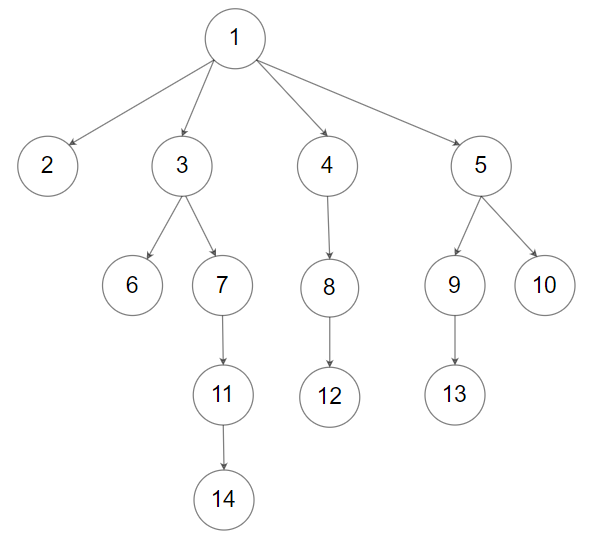[LeetCode] 428. Serialize and Deserialize N-ary Tree_hard tag: DFS, Divide and Conquer
2021-07-29 22:39 Johnson_强生仔仔 阅读(48) 评论(0) 编辑 收藏 举报Serialization is the process of converting a data structure or object into a sequence of bits so that it can be stored in a file or memory buffer, or transmitted across a network connection link to be reconstructed later in the same or another computer environment.
Design an algorithm to serialize and deserialize an N-ary tree. An N-ary tree is a rooted tree in which each node has no more than N children. There is no restriction on how your serialization/deserialization algorithm should work. You just need to ensure that an N-ary tree can be serialized to a string and this string can be deserialized to the original tree structure.
For example, you may serialize the following 3-ary tree

as [1 [3[5 6] 2 4]]. Note that this is just an example, you do not necessarily need to follow this format.
Or you can follow LeetCode's level order traversal serialization format, where each group of children is separated by the null value.

For example, the above tree may be serialized as [1,null,2,3,4,5,null,null,6,7,null,8,null,9,10,null,null,11,null,12,null,13,null,null,14].
You do not necessarily need to follow the above-suggested formats, there are many more different formats that work so please be creative and come up with different approaches yourself.
Example 1:
Input: root = [1,null,2,3,4,5,null,null,6,7,null,8,null,9,10,null,null,11,null,12,null,13,null,null,14] Output: [1,null,2,3,4,5,null,null,6,7,null,8,null,9,10,null,null,11,null,12,null,13,null,null,14]
Example 2:
Input: root = [1,null,3,2,4,null,5,6] Output: [1,null,3,2,4,null,5,6]
Example 3:
Input: root = [] Output: []
Constraints:
- The number of nodes in the tree is in the range
[0, 104]. 0 <= Node.val <= 104- The height of the n-ary tree is less than or equal to
1000 - Do not use class member/global/static variables to store states. Your encode and decode algorithms should be stateless.
Ideas: 利用[LeetCode] 297. Serialize and Deserialize Binary Tree_hard tag: DFS, Divide and Conquer的idea,只不过因为是n-aray, 那么不知道每个root的children有多少个,所以可以将len(root.children)的个数也存进encode string里面,需要注意的是‘.’.join([]) => [''] 返回的是一个有empty string 的array, 所以array非空! 注意这个edge case,所以如果root is None, 那么在判断
data_queue的时候还要加上not data_queue[0]. 另外就是string 和integer注意要相互转换。
Code:
""" # Definition for a Node. class Node(object): def __init__(self, val=None, children=[]): self.val = val self.children = children """ class Codec: def serialize(self, root: 'Node') -> str: """Encodes a tree to a single string. :type root: Node :rtype: str """ ans = [] self.preOrder(root, ans) #print(ans) return ','.join(ans) def preOrder(self, root, ans): if not root: return ans.append(str(root.val) + '-' + str(len(root.children))) for child in root.children: self.preOrder(child, ans) def deserialize(self, data: str) -> 'Node': """Decodes your encoded data to tree. :type data: str :rtype: Node """ data_queue = collections.deque(data.split(',')) return self.helper(data_queue) def helper(self, data_queue): if not data_queue or not data_queue[0]: return rootVal, numChild = data_queue[0].split('-') root = Node(int(rootVal), []) data_queue.popleft() for _ in range(int(numChild)): root.children.append(self.helper(data_queue)) return root


